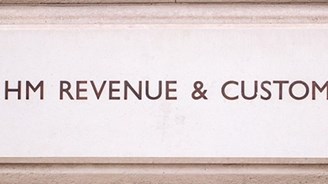More Problems With The Savings And Dividend Tax Regimes

Back in June 2016, I wrote about some of the unexpected issues arising from the introduction of the Savings Allowance and the Dividend Allowance for the 2016/17 tax year. I speculated at the time whether tax return software would automatically compute the minimum tax liability when they were issued in April 2017.
The kind answer is that the software does - but only in parts. HMRC has struggled (understandably) with the complexities imposed upon them by George Osborne when he was Chancellor. The main complication has arisen in identifying and remedying those scenarios in which it is not beneficial for a taxpayer to allocate personal allowances in the default order of 'non-savings income, then savings income, then dividend income'. In the new dividend tax regime there a number of scenarios in which it may pay a taxpayer to reallocate part of the personal allowance to dividends.
HMRC seem to have coped with most scenarios but have failed to appreciate in time some other issues. HMRC have now released the 'exclusions' from their specifications provided to software providers for the submission of online personal tax returns. This is what the exclusion list states:
Where a personal return cannot be filed online for a reason listed below, provided that a paper return is delivered on or before 31st January following the end of the tax year to which the return relates, HMRC will accept that the taxpayer had a reasonable excuse for failing to file a paper return by the normal 31st October deadline. A reasonable excuse claim should accompany the paper return.
A commercial provider of tax return software for online filing must follow the HMRC specifications as, otherwise, the tax return will be rejected. So an agent is faced with the choice of submitting a tax return online which does not minimise the client's tax liability or file a paper return.
The two most significant new exclusions are 51 and 52 - 52 perhaps being the most common for clients.
Exclusion 52
Exclusion 52 is a basic error as to how the £5,000 Dividend Allowance works. The error applies if any part of the Dividend Allowance has been utilised against the basic rate band and the rest of the dividends take the taxpayer within £5,000 of the additional rate band.
Example
Income £11,000 and dividends £140,000. Such a taxpayer would have no personal allowance.
HMRC specifications calculate - Employment £11,000 x 20%, Dividends £5,000 x 0%, £16,000 x 7.5% & (incorrectly) £113,000 x 32.5% & £6,000 x 38.1%.
However the higher rate band is from £32,000 to £150,000 which is £118,000. All the Dividend Allowance has been used in the basic rate band. So the tax on the dividend is £118,000 x 32.5% and £1,000 x 38.1%.
Do you have any taxpayers like this? Probably is the answer. A director-shareholder of his own company with a 'low salary, balance as dividends' means of profit extraction would potentially fall into this category.
Exclusion 51
This exclusion relates to the calculation of tax if the savings starting rate of tax (0%) potentially applies to savings income. The 0% rate applies to savings income if taxable non-savings is less than £5,000. So if earned income is £12,000 and the taxpayer has a standard personal allowance of £11,000, the first £4,000 of savings income could benefit from the 0% rate. HMRC do correctly compute the tax liability in this scenario but go haywire when non-savings income is under £16,000 and savings income is sufficient to take non-savings and savings income beyond the basic rate band.
Example
A pension of £12,000 and savings interest of £21,000 should have a tax liability computed as:
Taxable pension = £1,000 (£12,000 - £11,000)
Savings income - £4,000 at 0% due to savings starting rate band, £1,000 at 0% due to Savings Allowance and the balance at 20%.
This gives a total tax liability of £3,400.
What the HMRC specifications seem to do however is to tax double the excess of the pension over the personal allowance (ie an extra £1,000 at 20%) but take away £1,000 of the 0% rate from the savings income. So the tax liability is overstated by £200.
The saving grace may be that you have no clients with so much savings income relative to non-savings income.
What will happen for 2017/18 tax returns?
HMRC will be amending their tax return specifications for the 2017/18 tax year, which will be adopted by tax return software providers by April 2018, but we have a planning tool which already takes into account these issues for the 2017/18 tax year - our Profit Extraction Planner. For details see here.
If you want a copy of the exclusions for 2016/17 see here.



